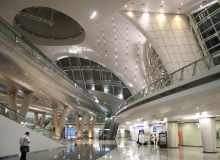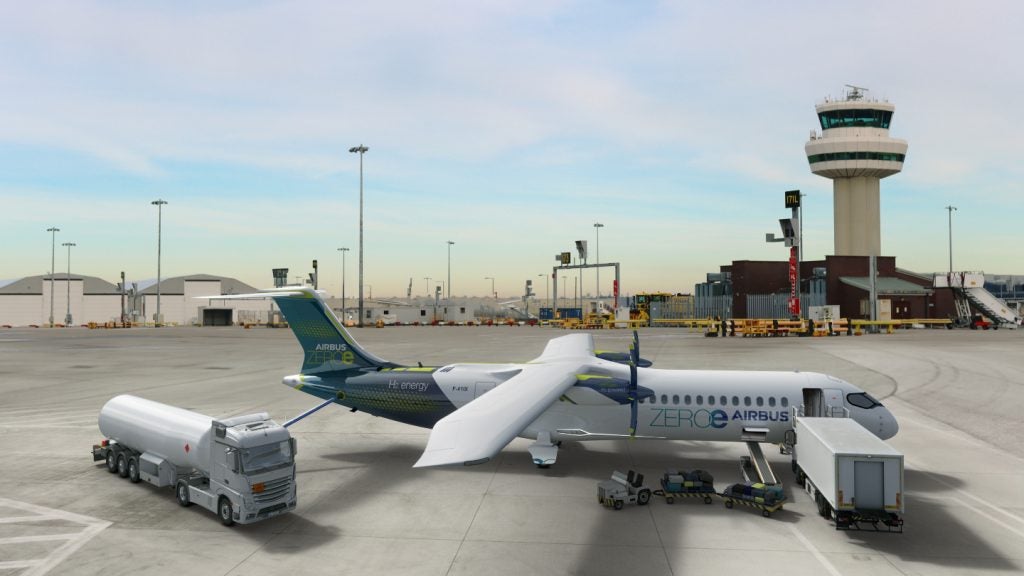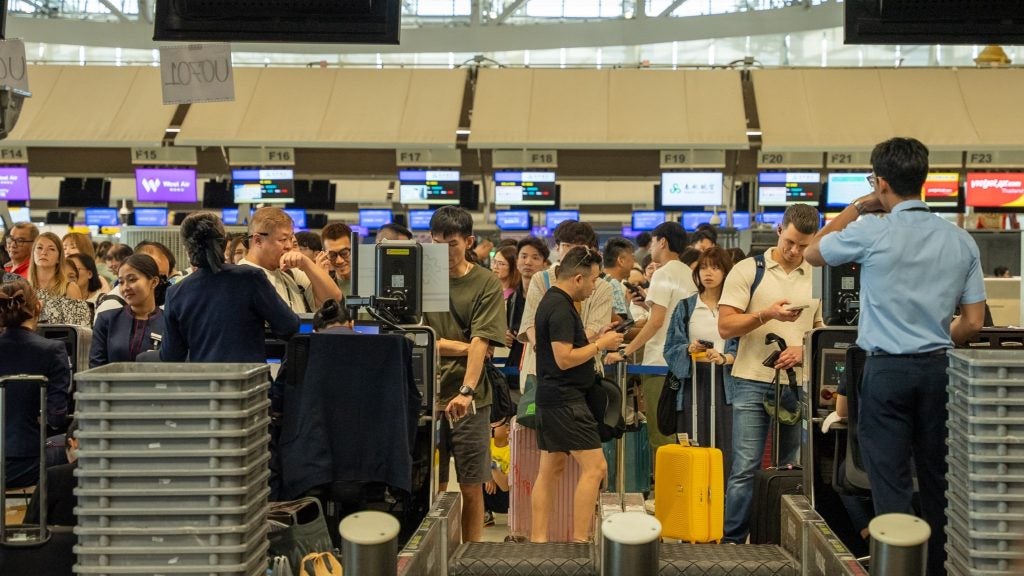
The development of modern airport terminals involves far more than just conveying passengers to and from their flight gates. Major air hubs have to incorporate a host of complex considerations, from security and passenger flow to retail and design aesthetics.
We book a round-the-globe ticket to check out some of the world’s most successful airports and find out what it takes to develop a truly memorable terminal building.
Beijing International Airport, China
Although Beijing International Airport’s third terminal, completed in spring 2008, has since been overtaken by the new terminal at Dubai International as the world’s largest passenger terminal, the dimensions of the 986,000m² building are still mind-boggling.
All five of London Heathrow’s terminals could comfortably fit inside Terminal 3 with 17% of its floor space to spare. The building’s sheer scale makes it all the more remarkable that it was designed, built and commissioned in a period of just four years.
But as it was primarily built to help Beijing Airport handle extra passenger volumes during the 2008 Olympic Games, Terminal 3 was clearly intended as a symbol of China’s national prestige as well as size. As such, the building is as impressive for its design and technological aspects as it is for square footage.
Designed by London-based architectural firm Foster + Partners, the terminal is characterised by strong sight lines up and down its length, abundant natural light from skylights all over the roof, and an aesthetic that combines the clean lines of modern design with the rich colours and dramatic iconography seen in traditional Chinese architecture, including a high-tech colour-shifting lighting system in the roof.
How well do you really know your competitors?
Access the most comprehensive Company Profiles on the market, powered by GlobalData. Save hours of research. Gain competitive edge.

Thank you!
Your download email will arrive shortly
Not ready to buy yet? Download a free sample
We are confident about the unique quality of our Company Profiles. However, we want you to make the most beneficial decision for your business, so we offer a free sample that you can download by submitting the below form
By GlobalDataAn advanced environment control system allows the terminal to minimise its energy consumption, along with eco-friendly passive design choices like the south-east oriented skylights, which make the most of heat gain in the early mornings. An 80kph automated people mover whisks passengers to different areas of the massive facility.
The combination of efficiency, design and technology at Terminal 3 has helped Beijing Airport rapidly become the world’s second-busiest airport, as well as winning it fifth place at this year’s World Airport Awards.
Washington Dulles International Airport, US
Dulles International Airport, a major hub for domestic and international air travel with 23.7 million annual passengers in 2010, integrates one of the most distinctive terminal buildings worldwide.
Originally opened in 1962, the design, with a suspended catenary roof, provides a wide terminal area unobstructed by any columns. The terminal cost was $108.3m, with 127 gates and 14 hardstand locations, from which passengers can board or disembark using the airport’s mobile lounges or plane mates.
The terminal building houses a ticketing, baggage claim and the International arrivals building and its length was doubled during an expansion in 1996 to 380m. In September 2009, an extension of the international arrivals building was opened, including a 3,850m2 hall for customs and immigration with the capability of processing 2,400 passengers an hour. At the same time an 11,310m2 central Transportation Security Administration checkpoint was added on a new mezzanine level of the main terminal.
In 2010, a new train system called the AeroTrain by Mitsubishi began transporting passengers between the concourses, the main terminal and the two midfield terminals. The train is set to fully replace the mobile lounges as part of an ongoing expansion plan, which are still in use at Dulles as one of the few remaining airports worldwide.
The planned development in the future will also see the addition of a new south terminal to increase passenger handling capacity and flow.
Incheon International Airport, South Korea
South Korea’s largest airport has always hovered around the top of Skytrax’s World Airport Awards list – Incheon came top in 2009, runner-up in 2010 and third place this year. With 33 million passengers served, 2010 was also the airport’s most successful year since its opening in 2001.
Incheon might be one of Asia’s busiest air hubs, but looking at the list of facilities available onsite you would be forgiven for assuming it was a holiday resort in its own right.
Terminal facilities include a host of garden spaces, an observation deck, the Cultural Museum of Korea, a spa and even an 18-hole golf course, on top of retail areas and food courts. The South Korean government has nicknamed Incheon ‘the Winged City’, and with all the facilities on offer it’s not difficult to see why.
All of these leisure facilities are underpinned by world-class transport systems and advanced IT networks allowing self check-in and other time-saving practices.
Incheon claims passengers can pass through departures in just 16 minutes, a major improvement on the current global standard of 60 minutes. With ongoing expansion work expected to bring an extra terminal as well as new concourses and gates by 2020, Incheon looks set to maintain and build upon its position as a key hub in the Asia-Pacific region.
Shenzhen Bao’an International Airport, China
With China becoming increasingly attractive to travellers from around the world, the country has progressively enlarged its airport capacity. Shenzhen Bao’an International Airport is one of the large-scale projects with the purpose to improve not only tourism but also trade via air travel.
With an initial runway designed to handle 16 million passengers a year the airport needed a major expansion. In 2008, Massimiliano Fuksas Architects won an international competition for the extension of the airport with the design of the new 400,000m² Terminal 3. Construction work started in the same year and will be carried out in three phases.
The first one is expected to be completed in 2012, raising the initial passenger capacity to 24 million a year. Phase two will come to an end in 2025, raising the airports capacity to 26 million passengers, and phase three will be concluded in 2035. By then, the airport will be China’s fourth largest airport.
Stretching over three levels, the £1.2bn new terminal building is shaped as a cross. It incorporates a patterned 300,000m² double skin canopy of steel and glass, resembling a honeycomb. According to the architects, the roof allows light to flow into the building, hides the mechanical systems and reduces energy consumption by shielding the space from excessive solar heat gain.
The concourse area is one of the key spaces and the three levels naturally divide arrival, departure and service stations, improving passenger movement throughout the terminal building.
Zurich International Airport, Switzerland
Through a long series of expansion programmes over the last ten years or more, Zurich Airport has transformed itself into a world-class facility.
This steady iterative process has seen the airport add its new Airside Centre, the Skymetro automated transport link that ferries passengers between the Airside Centre and Terminal E, and a robotic baggage handling system that has helped Zurich snag successive awards in the baggage delivery category from the World Airport Awards in 2010 and 2011.
The airport’s latest upgrade project is now nearing completion. Airport operator Flughaven Zurich has renovated and rebuilt its Dock B structure, as part of its Zurich 2010 programme, to allow passengers to pass through security quickly and efficiency, maximising the time they can spend in the airport’s flagship Airside Centre.
As well as incorporating ultra-modern technologies like self-boarding turnstiles, Dock B is tailored to flexibly handle passengers flying within the area of the Schengen Agreement, separating them from the non-Schengen passenger flow for greater efficiency. The new dock is scheduled to open on 1 December 2011 after completing in-depth testing on all processes.
Changi International Airport, Singapore
Singapore’s main airport Changi handled more than 42 million passengers in 2010, making it the fifth busiest airport in Asia. To reach such record numbers, its operator Changi Airport Group increased the airport’s capacity by 22 million with the addition of a new terminal in 2008.
Designed by CPG, the S$1.75bn ($900m) Terminal 3 departs from the practical designs of the first two structures. The 430,000m² building is mainly made of glass and features big transport spaces inside that use natural features and warm tones to balance the extensive use of glass and steel.
It includes an automated mover connecting the three terminals, a nine-storey Crown Plaza hotel and 28 aerobridge gates, eight of which are capable of handling the Airbus A380.
The roof has been designed by Skidmore, Owings and Merrill and allows natural light to enter the terminal building. A five-storey green wall with hanging creepers and four waterfalls that helps to regulate the internal temperature spans 300m across the main building so that it can be seen from both the departure and the arrival hall.
It has been rumoured that the Singapore Ministry of Transport is currently working on a master plan to add another terminal to the airport to further enlarge the airport’s overall passenger handling capacity. Even though the government has not yet released any further plans, the new terminal is widely expected to be built in the next ten to 15 years.
By Elisabeth Fischer and Chris Lo







